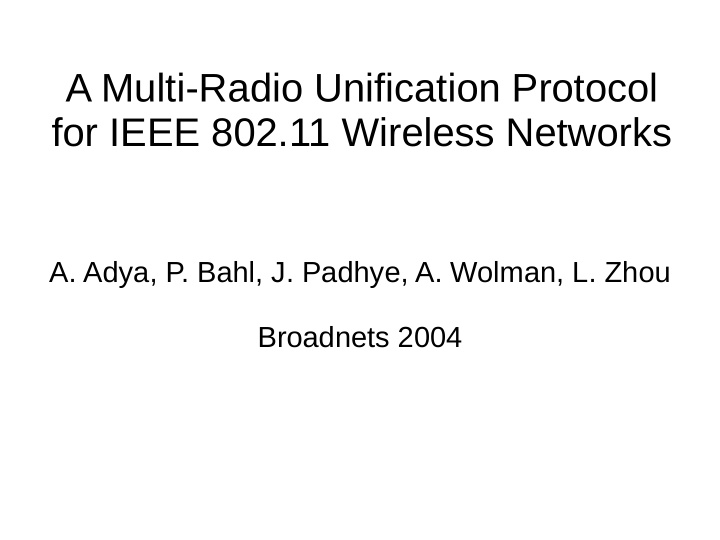



A Multi-Radio Unification Protocol for IEEE 802.11 Wireless Networks A. Adya, P. Bahl, J. Padhye, A. Wolman, L. Zhou Broadnets 2004
Motivation ● Utilizing multiple orthogonal channels in a single radio might be cumbersome, typically requiring a sophisticated algorithms ● Multi-radios may not that be expensive ● Straightforward approach: one channel for each radio – Inefficient spectrum use – Easy to implement and deploy
Challenge ● Use multiple channels (radios) at the same time? ● Use only a single channel (radio) at a time ● Multiple channels at a time requires – A sophisticated mutual agreement (distributed algorithm), tickling your intelligence? – Need to improve SSCH! ● Only a single channel at a time requires – A virtual network interface layer – Easy to implement?
MUP ● Multi-radio Unification protocol
MUP Design ● Neighbor discovery and classification
MUP Design ● Steady-state MUP communication – Selecting the communication channel ● 802.11e? ● SRTT (Smoothed Round Trip Time)
MUP Design ● Switching channel – Period: 10 – 20 seconds – Threshold: 10% difference ● ● Switching strategies – Random – Channel quality metrics ● delay?
Metric Justification
Metric Justification
Metric Justification
Simulation Setting
Simulation Results
Simulation Results
Simulation Results
New Simulation Setting
Simulation Results
Web Traffic
Simulation Results
Recommend
More recommend